Effective Remedies for Dry, Itchy Feet Relief
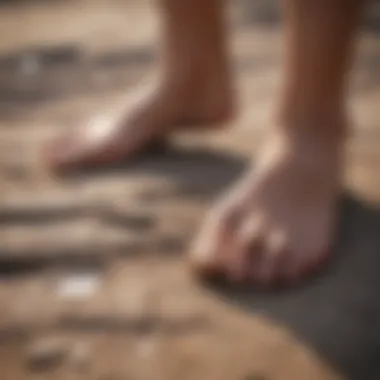
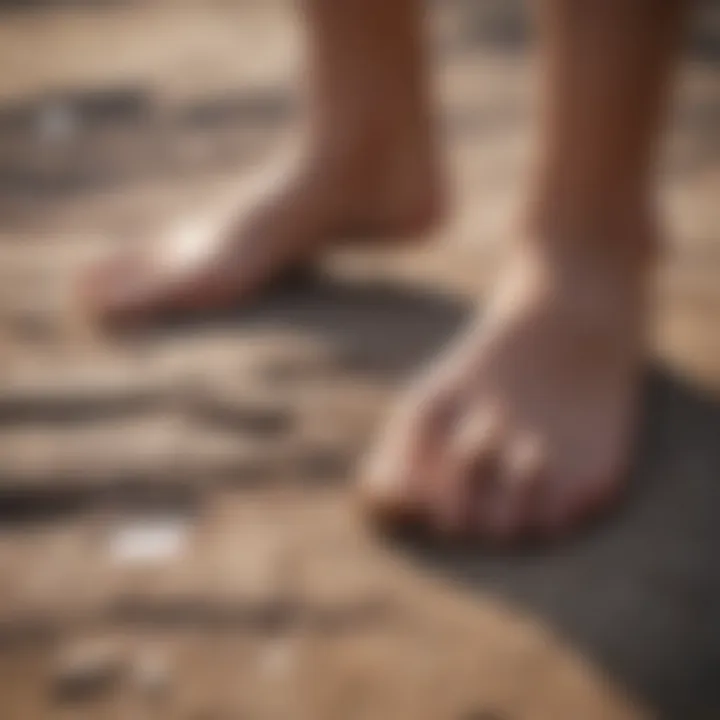
Intro
Dry, itchy feet are a common issue that many people experience at some point in their lives. The discomfort can stem from various factors, including environmental conditions, skin disorders, or even lifestyle choices. Understanding the root causes of this condition can significantly aid in managing and preventing further irritation. By exploring practical solutions and remedies, one can achieve relief and improve overall foot health.
In this article, we will investigate different strategies to combat dry and itchy feet. This includes recommendations for natural remedies, lifestyle modifications, and the importance of seeking professional advice when necessary. Whether you are dealing with a temporary issue or chronic discomfort, the insights provided here will arm you with effective tools for both immediate and long-term care.
Understanding Dry Itchy Feet
Understanding dry itchy feet is essential for anyone experiencing the discomfort associated with this condition. It provides a foundational comprehension that can guide individuals toward practical solutions and preventive measures. With a clearer grasp of what causes this issue, individuals can better address symptoms and improve their overall foot health. This section delves into the condition, symptoms, and potential complications, equipping readers with the necessary insights to approach treatment intelligently.
Defining the Condition
Dry itchy feet, also known as foot dermatitis, refer to a condition characterized by dryness, flaking, and irritation on the skin of the feet. This condition can manifest in various forms, ranging from mild to severe, depending on the underlying causes. Often, it affects the skin's moisture balance, leading to symptoms that significantly impact daily life. While it might seem like a minor issue, it can interfere with both physical activity and overall comfort.
Common Symptoms
While the defining characteristics of dry itchy feet might be straightforward, recognizing the common symptoms can help in identifying the issue quickly. Symptoms typically include:
- Redness or inflammation in affected areas
- Visible dryness, flaking, or cracking of the skin
- An intense craving to scratch the itchy areas
- Burning or stinging sensations in severe cases
These symptoms can vary widely between individuals and might change over time due to external factors such as climate or footwear.
Potential Complications
Ignoring dry itchy feet can lead to potential complications that can exacerbate the condition. Some concerns include:
- Infections: Cracks in the skin can become entry points for bacteria, leading to infections. Conditions such as athlete's foot become more prevalent when the skin’s integrity is compromised.
- Chronic Skin Conditions: Chronic scratching may cause further skin irritation and can lead to conditions like eczema.
- Reduced Quality of Life: Persistent discomfort can affect mobility and overall enjoyment of physical activities.
It's crucial to pay attention to symptoms as they can indicate underlying health issues that need professional evaluation.
Causes of Dry Itchy Feet
Understanding the causes of dry itchy feet is crucial for determining effective remedies. Identifying the underlying reasons for the discomfort enables targeted approaches to treatment. Often, addressing the cause is more efficient than merely alleviating the symptoms. The causes can be environmental, related to skin conditions, or stem from medical issues. A comprehensive understanding enhances the ability to manage and prevent recurrence.
Environmental Factors
Environmental factors play a significant role in the condition of the skin on feet. For instance, exposure to dry air, especially during winter months, can result in moisture being drawn from the skin. This leads to dryness and irritation, making the feet more susceptible to itching. Additionally, prolonged contact with harsh chemicals like soaps, detergents, or similar products can strip the natural oils from the skin. People who spend extended periods in wet or damp conditions may also notice that their feet become itchy due to the breakdown of skin integrity.
Uncomfortable footwear further complicates the situation. Shoes that do not allow proper ventilation can trap moisture and heat, creating an environment for itchiness to thrive. Furthermore, wearing socks made from synthetic materials can exacerbate dryness. It is vital to choose breathable materials and avoid prolonged exposure to warm, moist environments.
Skin Conditions
Several skin conditions can cause or worsen dry itchy feet. Conditions such as eczema and psoriasis may lead to flaky patches and chronic itching. Eczema, particularly, can become more pronounced in areas that experience frequent friction, such as the feet. Individuals with these conditions may also experience flares triggered by irritants or allergens in their environment.
Athlete's foot is another common ailment that can lead to dry and itchy skin on the feet. This fungal infection often leads to peeling and red spots between the toes and can spread if not treated adequately. In some cases, the presence of nail fungus can also contribute to an overall feeling of discomfort in the feet.
Medical Issues
Medical issues can also play a substantial role in causing dry itchy feet. Diabetes, for instance, may lead to nerve damage, which can result in the skin's ability to retain moisture diminishing. Furthermore, conditions like hypothyroidism can influence skin hydration, thus leading to dryness and itchiness.
Circulatory issues may also contribute to the problem. Poor blood circulation can prevent the feet from receiving adequate nutrients, which is essential for maintaining skin health. This may lead to symptoms like excessive dryness and irritation.

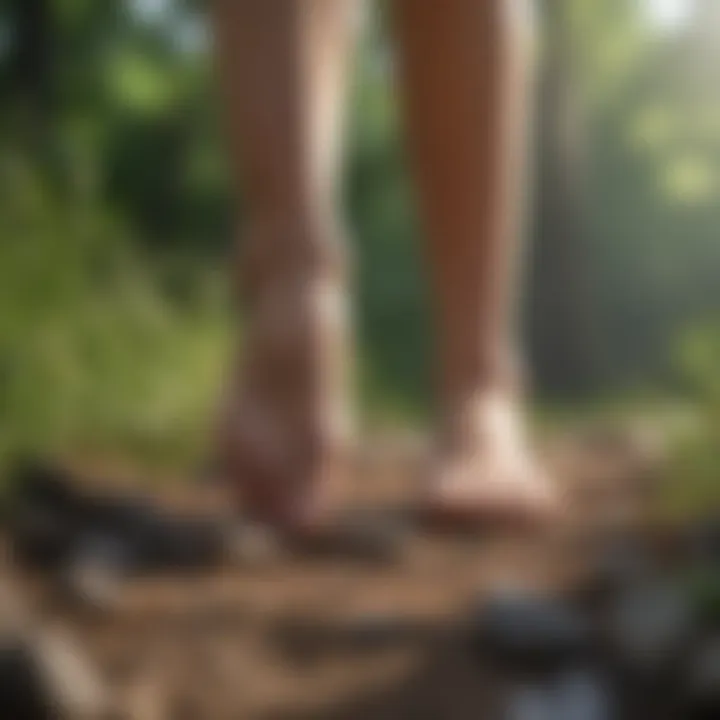
To summarize, understanding the causes, whether environmental, related to skin conditions, or medical issues, is essential. Without this understanding, effectively addressing dry itchy feet remains a challenge.
Immediate Remedies
Immediate remedies for dry itchy feet are essential for providing relief and comfort. They focus on quick solutions to alleviate symptoms and address the underlying causes. Understanding such remedies can greatly improve the quality of life for those experiencing discomfort. These solutions are not just about temporary relief but also help prevent further irritation and complications.
Over-the-Counter Treatments
Over-the-counter treatments play a significant role in managing dry itchy feet. These products are readily available in pharmacies and offer a wide range of options. Common treatments include hydrocortisone creams, which can reduce inflammation and itching effectively. There are also antifungal products, useful for those whose condition may be related to fungal infections.
Many people benefit from using therapeutic lotions containing ingredients like urea or salicylic acid. These components not only soothe irritated skin but also enhance moisture retention. Individuals should choose products based on their specific symptoms and skin sensitivity to ensure effectiveness without exacerbating the condition.
Moisturizers and Emollients
Moisturizers and emollients are fundamental components of treating dry itchy feet. A good moisturizer will restore hydration to the skin, creating a barrier that locks in moisture. Regular application is essential for maintaining skin health. Options include creams and lotions designed specifically for foot care, as they often have added ingredients for enhanced relief.
Ingredients to look for include glycerin, dimethicone, and lanolin, as these help to soften the skin while providing long-lasting hydration. It is advised to apply these products after washing and drying feet to capture and retain moisture effectively.
Soaking Techniques
Soaking techniques provide a soothing method to hydrate and treat dry, itchy feet. These methods not only relieve discomfort but also prepare the skin for further treatment. Below are specific soaking techniques that can be beneficial:
Saline Soaks
Saline soaks involve soaking the feet in warm water combined with salt. This method can be particularly effective for reducing inflammation and drawing out toxins from the skin. Saline soaks help maintain a balance in the skin’s moisture levels. The key characteristic of this method is its accessibility and simplicity.
However, it is important to ensure the water is not too hot, as this may lead to further irritation. A common disadvantage is that overuse can lead to dryness due to salt's dehydrating properties. Therefore, balance is necessary when integrating saline soaks into a foot care routine.
Essential Oil Baths
Essential oil baths can greatly enhance the soothing effect of soaking. Oils such as lavender and tea tree are known for their anti-inflammatory and antimicrobial properties, helping to relieve symptoms of dryness and itching. Adding these to warm water creates a relaxing and therapeutic experience.
The unique feature of essential oil baths is their multifaceted benefits; they not only address dry skin but also promote relaxation and overall well-being. While generally safe, individuals should be cautious of potential allergic reactions to certain oils, so testing a small area first is advisable.
Herbal Infusions
Herbal infusions take soaking to another level by infusing plant extracts known for their healing properties. Chamomile and calendula are popular choices, praised for their soothing effects. This method contributes to reducing irritation while promoting skin hydration.
The main characteristic of herbal infusions is their natural formulation, appealing to those who prefer non-chemical treatments. An advantage is the holistic approach to skincare. However, the preparation may require more time than simple saline or essential oil baths, which could be inconvenient for some.
In summary, immediate remedies like over-the-counter treatments, moisturizers, and various soaking techniques are essential in managing dry itchy feet. By understanding these options, individuals can take proactive steps toward effective relief.
Natural Remedies
Natural remedies play a significant role in managing dry and itchy feet. Their appeal lies in their accessibility and often gentle nature, making them suitable for a wide range of individuals. These remedies can be especially beneficial for those who prefer to avoid synthetic products. Using natural substances can provide relief while minimizing the risks associated with harmful chemicals. For many, these solutions are not only effective but also more sustainable.
The benefits of natural remedies include skin nourishment, hydration, and anti-inflammatory properties. They can enhance the overall health of the feet without the side effects that may accompany conventional treatments. Additionally, these remedies encourage self-care rituals, providing opportunities for mindfulness and relaxation.
Considerations when using natural remedies include patch-testing to avoid allergic reactions, especially in individuals with sensitive skin or known allergies. Moreover, consistency is vital; while some remedies may provide immediate relief, regular application often yields better long-term results.
Coconut Oil
Coconut oil is a powerful natural remedy for dry and itchy feet. Its unique composition includes triglycerides and lauric acid, which possess anti-inflammatory and antimicrobial properties. This makes coconut oil effective in treating dry skin as well as preventing bacterial growth.
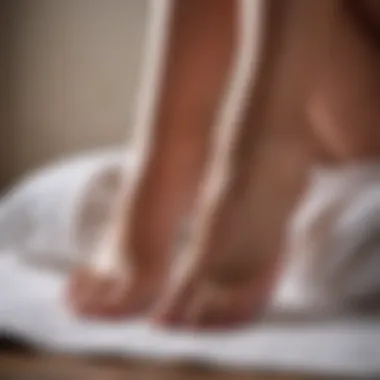
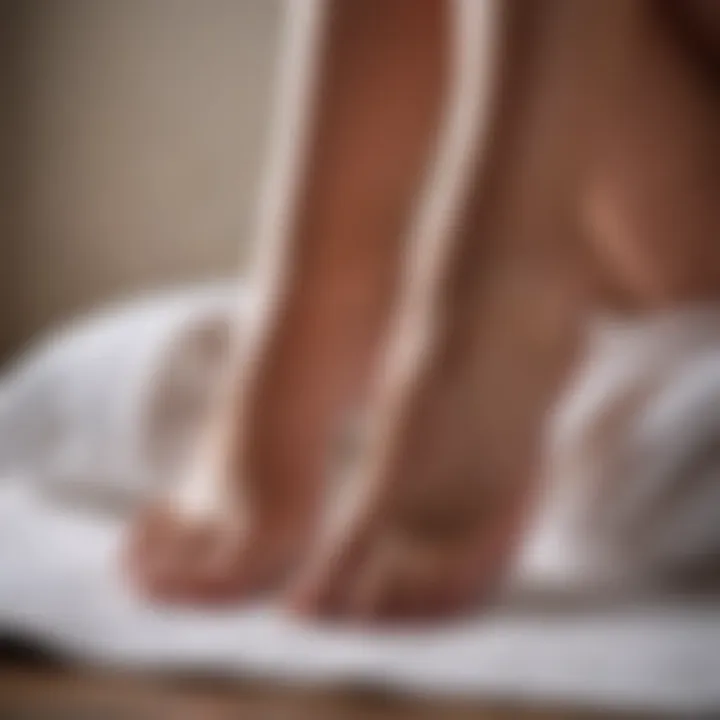
Applying coconut oil on the feet provides immediate hydration. It penetrates deeply into the skin, replenishing moisture and aiding in skin repair. The oil's soothing qualities can also relieve itching, creating a more comfortable condition for the feet.
To use coconut oil, simply warm a small amount in your hands and massage it into your feet, focusing on the areas most affected by dryness. For enhanced benefits, consider applying it before bedtime and wearing socks overnight. This allows for better absorption.
Aloe Vera
Aloe vera is another excellent choice for dry and itchy feet, known for its soothing properties. Aloe vera contains vitamins, enzymes, and amino acids that can promote skin health. It is also recognized for its ability to hydrate the skin and provides a calming effect that is useful for irritated or inflamed skin.
The gel extracted from aloe vera leaves can be applied directly to the feet. It works as a natural moisturizer, helping to soothe dryness and reduce any associated irritation. Additionally, the anti-fungal properties of aloe vera may protect against infections that can develop in dry skin.
For optimal results, use aloe vera gel twice daily. Fresh gel from the plant is preferred, though commercial options are available as well. Always check the ingredients to avoid additives that can be irritating.
Oatmeal Paste
Oatmeal is often cited as a remedy for various skin conditions, including dryness and irritation. Oats contain avenanthramides, which are natural antioxidants with anti-inflammatory effects. This quality makes oatmeal particularly effective for alleviating discomfort associated with dry, itchy feet.
To create an oatmeal paste, combine finely ground oats with water. Apply this paste to the affected areas and let it sit for about fifteen to twenty minutes. The paste will hydrate the skin, provide relief from itching, and can help reduce any redness.
Using oatmeal regularly can lead to noticeable improvement in skin texture and hydration levels. It is a simple solution that is also safe for most skin types.
Regular use of these natural remedies can significantly improve the condition of dry and itchy feet, fostering a state of comfort and well-being.
Lifestyle Modifications
Lifestyle changes play a critical role in managing and preventing dry, itchy feet. By adapting certain habits and practices, individuals can significantly improve foot health. These modifications often go unnoticed but can be quite powerful when it comes to maintaining skin moisture and overall comfort. In this section, we will delve into three key aspects of lifestyle adjustments: footwear choices, hygiene practices, and hydration importance.
Footwear Choices
Selecting the right footwear is paramount in preventing dry and itchy feet. Shoes that are too tight or do not allow proper ventilation can contribute to moisture loss and skin irritation. It is advisable to choose footwear made of breathable materials, which helps in keeping feet dry and comfortable. Materials such as leather and canvas tend to allow for better air circulation compared to synthetic materials.
Additionally, ensure that shoes fit well. A loose-fitting shoe may result in friction, leading to blisters and dry patches on the skin. Incorporating soft insoles can also enhance comfort and reduce the impact on the feet during walking. Furthermore, rotating shoes regularly can prevent them from becoming damp, especially in humid climates.
Hygiene Practices
Good hygiene is essential for maintaining healthy feet and preventing dryness. Regular washing with gentle soap helps remove dirt and sweat, which can exacerbate dry skin. After washing, it is crucial to dry feet thoroughly, especially between the toes. Moisture trapped in these areas can lead to fungal infections, which complicate the skin condition.
It also helps to exfoliate the feet weekly. This can be done using a pumice stone or foot scrub. Exfoliation removes dead skin cells and encourages new cell turnover, which can reduce the overall dryness of the feet. Finally, applying a moisturizer immediately after washing can lock in moisture and keep feet hydrated throughout the day.
Hydration Importance
Hydration is not only essential for overall health but also plays a significant role in skin health. Proper hydration helps maintain skin elasticity and moisture. When the body is well-hydrated, the skin on the feet is less likely to become dry and cracked.
Drinking an adequate amount of water daily is a straightforward strategy. This varies by individual, but a common recommendation is eight 8-ounce glasses per day. In addition to water, consuming foods high in water content, such as cucumbers, oranges, and melons, can also contribute to overall hydration.
Maintaining skin hydration topically is equally important. Applying a rich moisturizer specifically designed for feet can complement internal hydration.
"Healthy feet rely on a combination of proper footwear, hygiene, and hydration. By making these lifestyle modifications, individuals can see a reduction in dryness and discomfort."
In sum, lifestyle modifications concerning footwear, hygiene, and hydration can greatly affect the health of your feet. Taking these steps can lead to a noticeable improvement in skin condition and, ultimately, enhance comfort and quality of life.
When to Seek Professional Help
Recognizing when to consult a medical professional regarding dry, itchy feet is crucial. While many remedies exist for self-management, certain signs and persistent symptoms may indicate a need for professional intervention. Addressing these issues promptly can prevent further complications and ensure appropriate treatment.


Signs of Infection
Infections can manifest through several indicators. Look for the following symptoms:
- Increased redness or warmth in the affected area.
- Swelling that does not subside with home treatments.
- Pus or drainage, indicating potential bacterial infection.
- Fever or chills, suggesting a systemic response to infection.
If you observe these signs, seek medical attention. Untreated infections can worsen, requiring more extensive treatment and posing risks to overall health.
"Prompt action regarding signs of infection can save you from more severe health challenges later."
Persistent Symptoms
If dry and itchy feet persist despite home remedies, professional evaluation becomes essential. Persistent symptoms may include:
- Continuous itching that disrupts daily activities.
- Cracking or peeling skin that does not heal.
- Development of blisters or sores.
- Pain or discomfort that interferes with mobility.
These issues may point to underlying conditions that necessitate specialized treatment. Conditions such as eczema, psoriasis, or athlete's foot require a tailored approach. Consulting with a healthcare provider ensures accurate diagnosis and optimal treatment plans targeted toward your specific needs.
Preventive Measures
Preventive measures play an important role in managing dry, itchy feet. Preventing the condition is often easier than treating it after it has developed. By incorporating simple practices into daily life, individuals can greatly reduce the risk of experiencing this discomfort. Proactive steps can lead to healthier feet and improve overall well-being.
Daily Care Routine
Establishing a daily care routine is essential for maintaining foot health. This includes several key elements that should be consistently practiced:
- Moisturizing: Use a good moisturizer specifically designed for feet daily. Products containing urea or shea butter are effective. Applying after bathing can help lock in moisture.
- Cleansing: Gently wash feet with a mild soap each day. Avoid hot water, which can strip natural oils. Instead, opt for lukewarm water which is more gentle on the skin.
- Exfoliation: Regularly exfoliate at least once a week to remove dead skin. This can be done using a pumice stone or foot scrub. Proper exfoliation helps prevent fissures and rough patches.
- Nail Care: Trim toenails regularly. Cutting them straight across prevents ingrown nails, which can contribute to foot discomfort.
"An effective daily routine can serve as a powerful shield against dry, itchy feet."
Implementing these steps can create a foundation for healthier feet and minimize the occurrence of dryness and irritation.
Climate Considerations
Understanding the effect of climate on foot health is vital. Different environmental conditions can significantly impact skin moisture levels. Here are some considerations:
- Humidity Levels: In humid climates, moisture can build up, which may lead to fungal infections. Ensuring feet are dry and breathing is important. Choose breathable footwear to allow air circulation.
- Cold Weather: Cold and dry climates can lead to increased dryness. In these environments, it is essential to apply thicker moisturizers and consider wearing socks made of moisture-wicking materials.
- Seasonal Changes: As seasons change, adapt your foot care routine. Increase moisturizing during colder months and consider lighter products during warmer months.
By being aware of climate influences, one can adapt foot care accordingly to prevent the onset of dry and itchy conditions.
Concluding Remarks
The importance of concluding remarks in this article cannot be overstated. This section serves as a reflection on the comprehensive insights shared throughout. It reinforces the understanding of dry itchy feet, facilitating an appreciation for both the immediate and long-term solutions discussed. In an era where many individuals experience foot-related issues, it is essential to synthesize the key findings and cultivate a proactive attitude towards foot health.
Summarizing Key Points
To encapsulate the knowledge shared, here are some key points that have been discussed:
- Understanding the Condition: Dry itchy feet can arise from various underlying causes, including environmental factors, skin conditions, and other medical issues. Gaining clarity on these can guide effective treatment choices.
- Immediate Remedies: Options such as over-the-counter treatments, moisturizers, and soaking techniques are crucial for providing quick relief. These remedies offer immediate comfort and can halt further irritation.
- Natural Solutions: Ingredients like coconut oil, aloe vera, and oatmeal paste provide soothing relief. These natural remedies not only alleviate itchiness but also nourish the skin without harsh chemicals.
- Lifestyle Modifications: Changes in footwear, hygiene practices, and hydration can greatly impact foot health. Making mindful decisions about daily routines contributes to ongoing comfort and well-being.
- When to Seek Help: Recognizing signs of infection or persistent symptoms is essential. Timely consultation with a health professional can prevent complications and ensure proper treatment.
- Preventive Measures: Establishing a daily care routine and considering climate factors are vital for maintaining healthy feet. Consistency in these practices can lead to lasting improvement.
Encouragement for Continuous Care
An emphasis on continuous care is vital. Foot health often reflects overall well-being, so taking proactive measures is imperative. This does not simply mean addressing issues as they arise; it involves adopting a holistic approach to foot care.
Taking short moments each day to examine and care for your feet can make a significant difference. Here are some suggestions to ensure continuous care:
- Daily Moisturization: Apply moisturizer every day. This keeps skin hydrated and reduces dryness.
- Regular Inspection: Check for any unusual changes in your feet. Early detection of problems leads to better outcomes.
- Healthy Footwear Choices: Always wear shoes that provide support. Remain aware of how various shoes affect your feet.
- Stay Informed: Read about foot care practices. Having information empowers individuals to make better choices.
By adopting these strategies, not only are you addressing current issues but also implementing a framework for future foot health. Thus, the journey towards comfortable, healthy feet is one of continuous attention and care. The insights provided in this article should serve as a foundation for that ongoing process.















